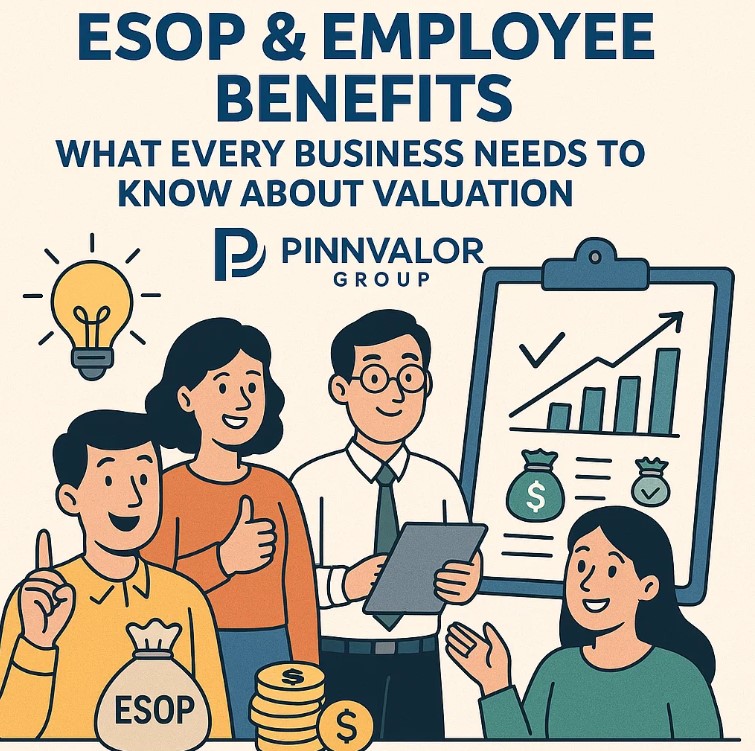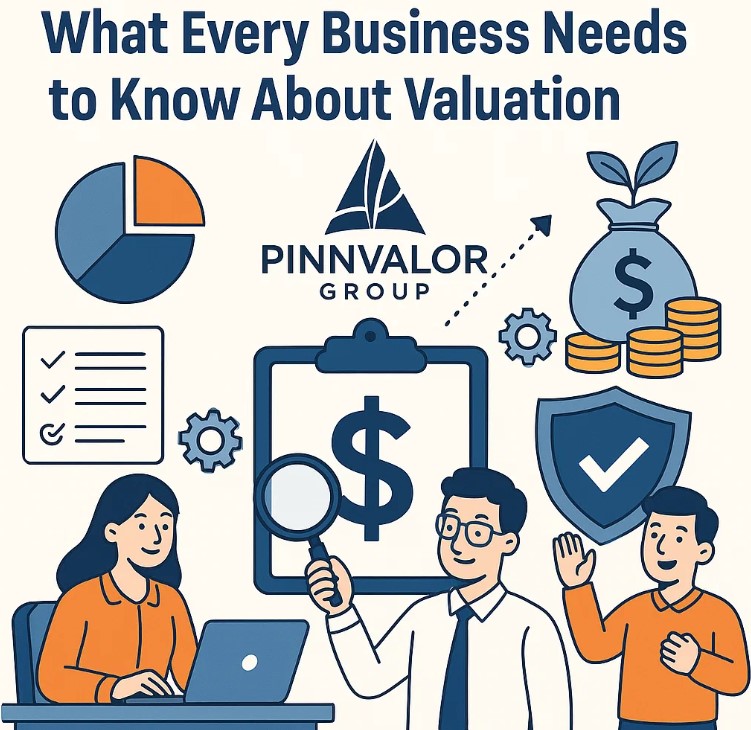
ESOP & Employee Benefits: What Every Business Needs to Know About Valuation
Employee Stock Ownership Plans (ESOPs) and other employee benefits have evolved into powerful tools not only for employee retention and motivation but also for strategic business growth. However, their effectiveness hinges on one critical factor — accurate and transparent valuation.
In this blog, we’ll explore why ESOP and employee benefit valuations matter, the core principles behind them, the methods used, and key takeaways every business leader should understand.
Is your ESOP valuation just a compliance exercise — or a strategic tool for growth and trust?
A well-structured ESOP backed by a professional valuation can turn employees into empowered stakeholders and drive long-term success.
🔍 What is ESOP Valuation?
An ESOP is a retirement plan that allows employees to acquire ownership interest in the company. Since employees receive shares over time, it becomes crucial to determine the fair market value (FMV) of those shares periodically — particularly for compliance, taxation, and internal decision-making.
💼 Why Valuation of ESOP & Employee Benefits Matters
Valuation isn’t just about numbers — it reflects the financial health, growth prospects, and employee equity value in the business. Here’s why it’s essential:
- ✅ Regulatory Compliance (under Income Tax Act & Companies Act)
- ✅ Fair Distribution of Ownership
- ✅ Employee Trust and Transparency
- ✅ Exit Strategy Planning
- ✅ Tax Efficiency and Planning
📊 Common Valuation Methods Used
Valuing ESOPs and employee benefits requires robust methodologies that comply with applicable laws and reflect a true picture of enterprise value.
- 1. Discounted Cash Flow (DCF) Method: Estimates future free cash flows and discounts them to present value. Widely used for start-ups and high-growth companies.
- 2. Comparable Company Multiples: Uses valuation multiples (like EV/EBITDA, P/E) from similar listed companies to estimate the firm’s value.
- 3. Net Asset Value (NAV) Method: Used for asset-heavy businesses, especially when consistent profitability is lacking.
- 4. Guideline Public Company Method: Involves benchmarking the company’s financials against similar public firms.
🧾 Valuation Considerations for Employee Benefits
While ESOPs are the most prominent, other benefits like phantom stock, SARs (Stock Appreciation Rights), gratuity, leave encashment, and pension liabilities must also be valued accurately. Key considerations include:
- 🎯 Actuarial Assumptions (like mortality, attrition, retirement age)
- 📉 Discount Rate and Inflation
- 🔍 Historical Trends of Employee Data
- 🧠 Impact of Future Salary Growth

📌 Key Takeaways for Business Leaders
- 1. Valuation Is Not One-Size-Fits-All: Each benefit plan has a different purpose, maturity structure, and accounting treatment — needing a tailored valuation approach.
- 2. Compliance Drives Credibility: Regulators like the Income Tax Department and Ministry of Corporate Affairs (MCA) require documented, defensible valuations.
- 3. ESOPs Create Long-Term Value: Transparent ESOP valuation fosters employee trust, enhances performance, and aligns interests of employees with shareholders.
- 4. Professional Valuation = Risk Mitigation: Errors in benefit valuation can lead to disputes, penalties, or loss of employee trust. Involving registered valuers or actuaries ensures accuracy.
- 5. Plan Ahead for Liquidity Events: Whether it’s a buyback, M&A, or IPO — knowing the value of employee entitlements prepares you for future transactions.
🧠 Conclusion
Valuing ESOPs and employee benefits is far more than a financial formality — it’s a strategic pillar for sustainable growth. Businesses that prioritize transparency, compliance, and accurate valuations send a strong message of trust to their workforce.
Whether you're a startup designing your first ESOP or a mature company reviewing your benefit obligations — a professional, compliant, and forward-looking valuation approach is the cornerstone of equitable and efficient employee ownership.
